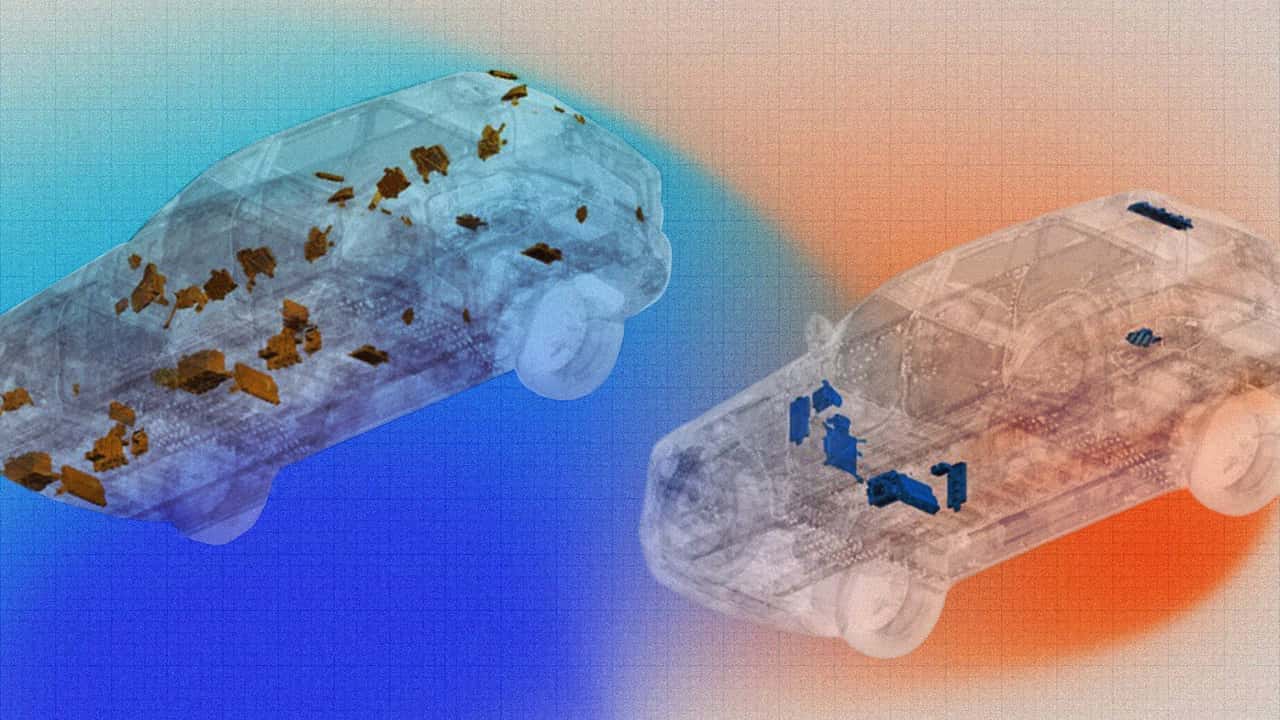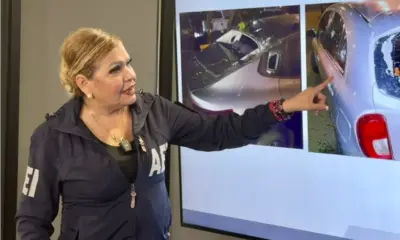Top Stories
GM Unveils Revolutionary Tech to Transform Gas and Electric Cars

UPDATE: General Motors (GM) has just announced a groundbreaking shift in vehicle technology that will redefine both gasoline and electric cars. At the GM Forward tech event in New York City, officials revealed plans for a revolutionary centralized compute architecture that aims to streamline vehicle systems, enhancing performance and reducing manufacturing costs.
This new architecture is set to launch with the highly anticipated Cadillac Escalade IQ in 2028, marking a significant step toward integrating advanced software features across all vehicle types. GM’s senior vice president of Software and Services Engineering, David Richardson, stated, “It’s propulsion-agnostic, which means that this technology will run across both electric and gas vehicles… and the payoff is massive.”
The urgency of this development cannot be overstated as the automotive industry faces slowing EV sales and shifting market dynamics. With tax credits for electric vehicles expiring, GM’s innovative approach aims to boost its gas-powered cars while also keeping pace with the electric vehicle revolution.
GM’s strategy is clear: by adopting a centralized architecture, the company plans to drastically reduce the number of vehicle components, simplifying systems that traditionally relied on numerous separate modules. This could lead to vehicles that are easier and more cost-effective to maintain.
Currently, many vehicles operate on a domain-based architecture, which requires extensive wiring and individual control units. In contrast, GM’s new zonal architecture consolidates functions into fewer, smarter units. The centralized system will oversee multiple traditional modules, enhancing communication and reducing complexity.
As Gary Cygan, GM’s director of platform engineering, explained, “We’ve moved away from standard fuse boxes. The aggregators handle those functions instead.” This transition promises quicker updates and the addition of new features over time, potentially revolutionizing how consumers interact with their vehicles.
The implications are profound: consumers can expect lower costs and improved reliability. Cygan emphasized that while the system will reduce material costs, the addition of advanced capabilities may still affect pricing. “If we were to take the exact same capability that you have in here and move to this architecture, it’s a lower material cost,” he noted, but acknowledged the complexities of integrating these systems into existing models.
The introduction of this architecture is not just about enhancing electric vehicles; it represents a pivotal move for gas-powered cars as well. With this technology, GM aims to maintain market relevance in an evolving landscape where consumers are increasingly leaning towards electrification.
While the Cadillac Escalade IQ will be the first to feature this architecture, GM plans to implement these upgrades across its entire lineup, including current-generation vehicles. This means drivers can look forward to enhanced features without needing to purchase entirely new models.
The potential for repairability is also noteworthy, as fewer components mean less time spent diagnosing issues. Cygan expressed optimism about this new approach, stating, “There are fewer things that can go wrong.”
At the GM Forward event, the company underscored its commitment to integrating robotics, AI, and autonomous technologies into both gas and electric vehicles. This ambitious plan is expected to deliver vehicles that can receive up to ten times more software updates than previous models, ensuring they stay current and capable of adapting to changing consumer needs.
As GM forges ahead with these transformative plans, the automotive world watches closely. The success of this centralized compute architecture will depend on its implementation and the ability to meet consumer expectations. With the stakes high, car buyers may soon find themselves behind the wheel of vehicles that not only bridge the gap between gas and electric but also offer a glimpse into the future of driving.
Stay tuned for more updates as GM rolls out this innovative technology that could change the landscape of the automotive industry.
-

 Business6 days ago
Business6 days agoUK to Finalize Stablecoin Regulations by 2026, Boosting Crypto Sector
-

 Business6 days ago
Business6 days agoU.S. and U.K. Target Cybercriminal Networks, Seize $15 Billion
-

 World5 days ago
World5 days agoMilitary Artillery Plan Sparks Safety Concerns Along California Highway
-

 Lifestyle6 days ago
Lifestyle6 days agoKISS OF LIFE’s Natty Dazzles in Micro-Shorts at Seoul Event
-

 Sports6 days ago
Sports6 days agoDomenico Doran’s Stellar Performance Leads Bishop Amat to Victory
-

 World6 days ago
World6 days agoTrump Signals Reluctance to Sell Tomahawk Missiles to Ukraine
-

 Business6 days ago
Business6 days agoCalifornia to Eliminate All Plastic Bags from Stores by 2026
-

 Entertainment6 days ago
Entertainment6 days agoLouisiana Senate Raises Concerns Over Medicaid Cuts Amid New Bill
-

 Entertainment6 days ago
Entertainment6 days agoUtah Communities Rally as Government Shutdown Strains Resources
-

 Sports6 days ago
Sports6 days agoTrade Low, Trade High: Key NHL Players to Consider Now
-

 Science3 days ago
Science3 days agoAncient Dinosaur Discovery in Argentina Reveals Evolutionary Insights
-

 Health3 days ago
Health3 days agoUncovering the Hidden Link Between Knee Pain and Hip Issues









